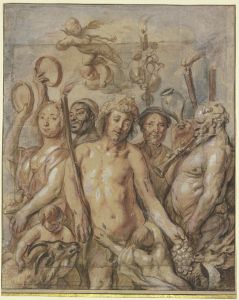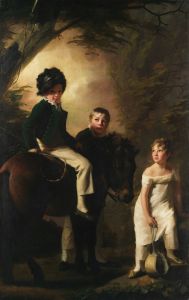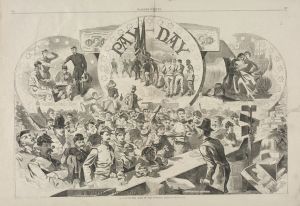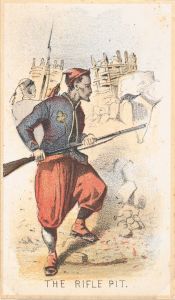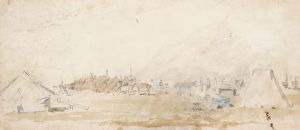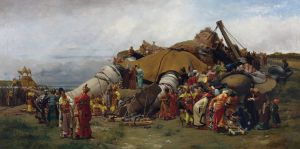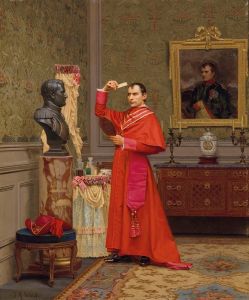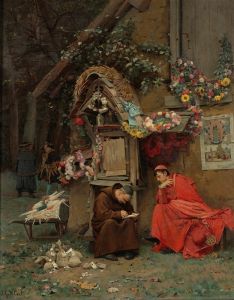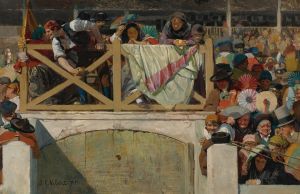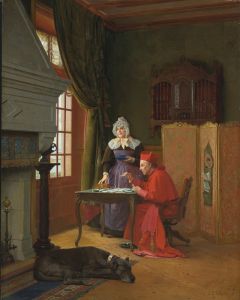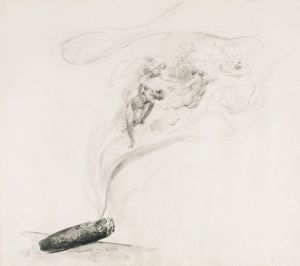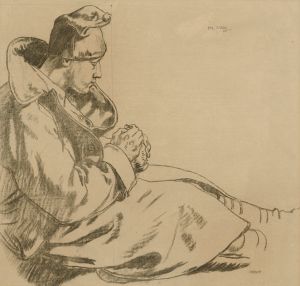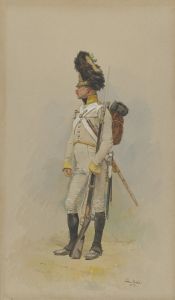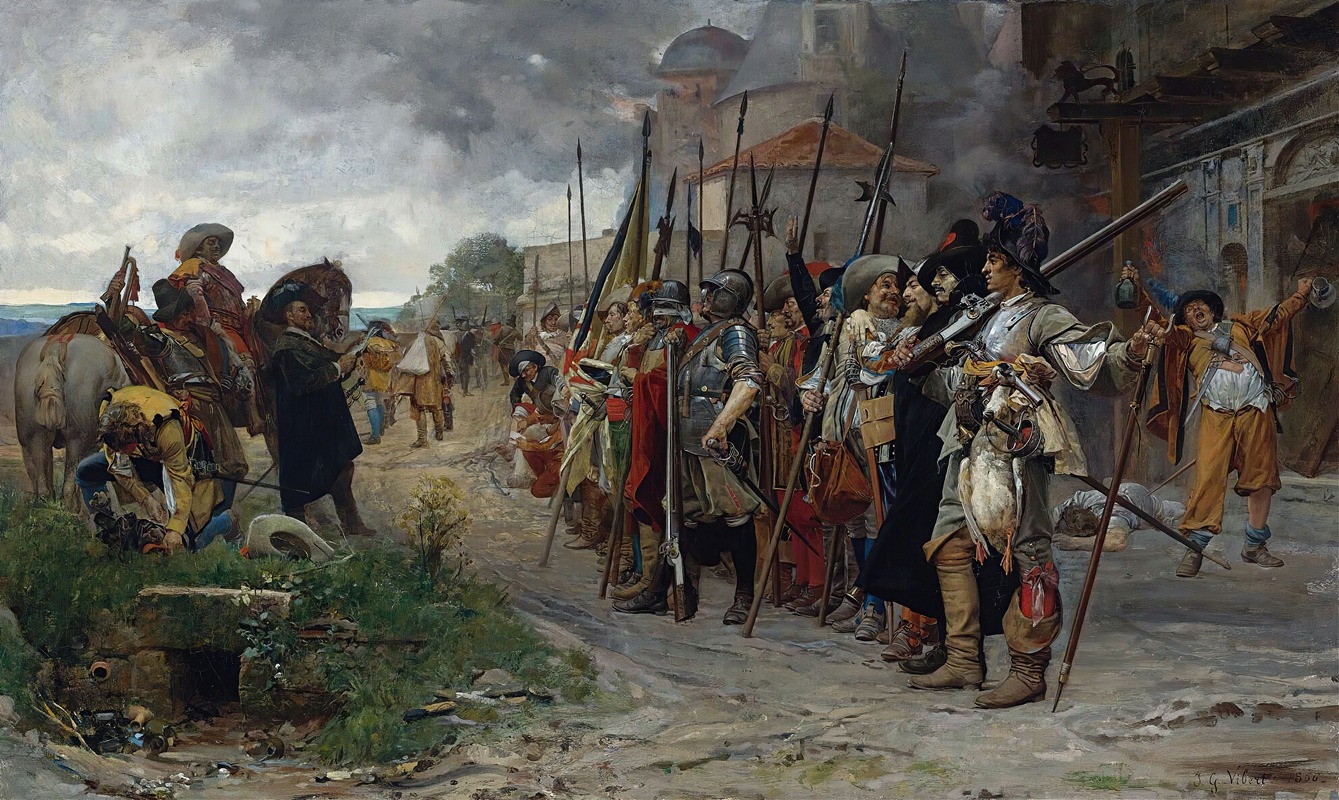
Roll-Call After The Pillage
A hand-painted replica of Jehan Georges Vibert’s masterpiece Roll-Call After The Pillage, meticulously crafted by professional artists to capture the true essence of the original. Each piece is created with museum-quality canvas and rare mineral pigments, carefully painted by experienced artists with delicate brushstrokes and rich, layered colors to perfectly recreate the texture of the original artwork. Unlike machine-printed reproductions, this hand-painted version brings the painting to life, infused with the artist’s emotions and skill in every stroke. Whether for personal collection or home decoration, it instantly elevates the artistic atmosphere of any space.
"Roll-Call After The Pillage" is a painting by the French artist Jehan Georges Vibert, who was known for his genre scenes and satirical works, often depicting clergy and other figures in humorous or critical contexts. Vibert was born on September 30, 1840, in Paris, France, and he studied at the École des Beaux-Arts under the tutelage of renowned artists such as François-Édouard Picot and Félix-Joseph Barrias.
The painting "Roll-Call After The Pillage" is a vivid example of Vibert's skill in combining detailed realism with a narrative that often carries a critical or satirical undertone. The artwork portrays a group of soldiers, presumably after a successful raid or battle, as they gather to take roll call. The scene is rich with detail, capturing the aftermath of the pillage with various objects and spoils scattered around, indicating the chaos and disorder that follows such events.
Vibert's meticulous attention to detail is evident in the rendering of the soldiers' uniforms, the expressions on their faces, and the various items strewn about the scene. The composition is carefully arranged to draw the viewer's eye across the canvas, taking in the various elements that tell the story of the aftermath of the pillage. The use of light and shadow adds depth and drama to the scene, highlighting the central figures and creating a sense of movement and activity.
Jehan Georges Vibert's work often included a critical perspective on the subjects he depicted, and "Roll-Call After The Pillage" can be seen as a commentary on the nature of war and its consequences. The painting does not glorify the act of pillage but rather presents it in a way that invites the viewer to reflect on the human cost and the moral implications of such actions.
Vibert was a member of the prestigious Académie des Beaux-Arts and exhibited regularly at the Paris Salon, where his works were well-received. His paintings were popular among collectors, and he enjoyed considerable success during his lifetime. In addition to his paintings, Vibert was also an accomplished writer and playwright, further showcasing his versatility and talent as an artist.
"Roll-Call After The Pillage" is a testament to Vibert's ability to blend technical skill with narrative depth, creating works that are both visually engaging and thought-provoking. The painting remains an important example of 19th-century French genre painting and continues to be appreciated for its artistic merit and the insight it provides into the social and cultural issues of the time.
Jehan Georges Vibert passed away on July 28, 1902, leaving behind a legacy of works that continue to be studied and admired for their craftsmanship and their ability to capture the complexities of human experience.





